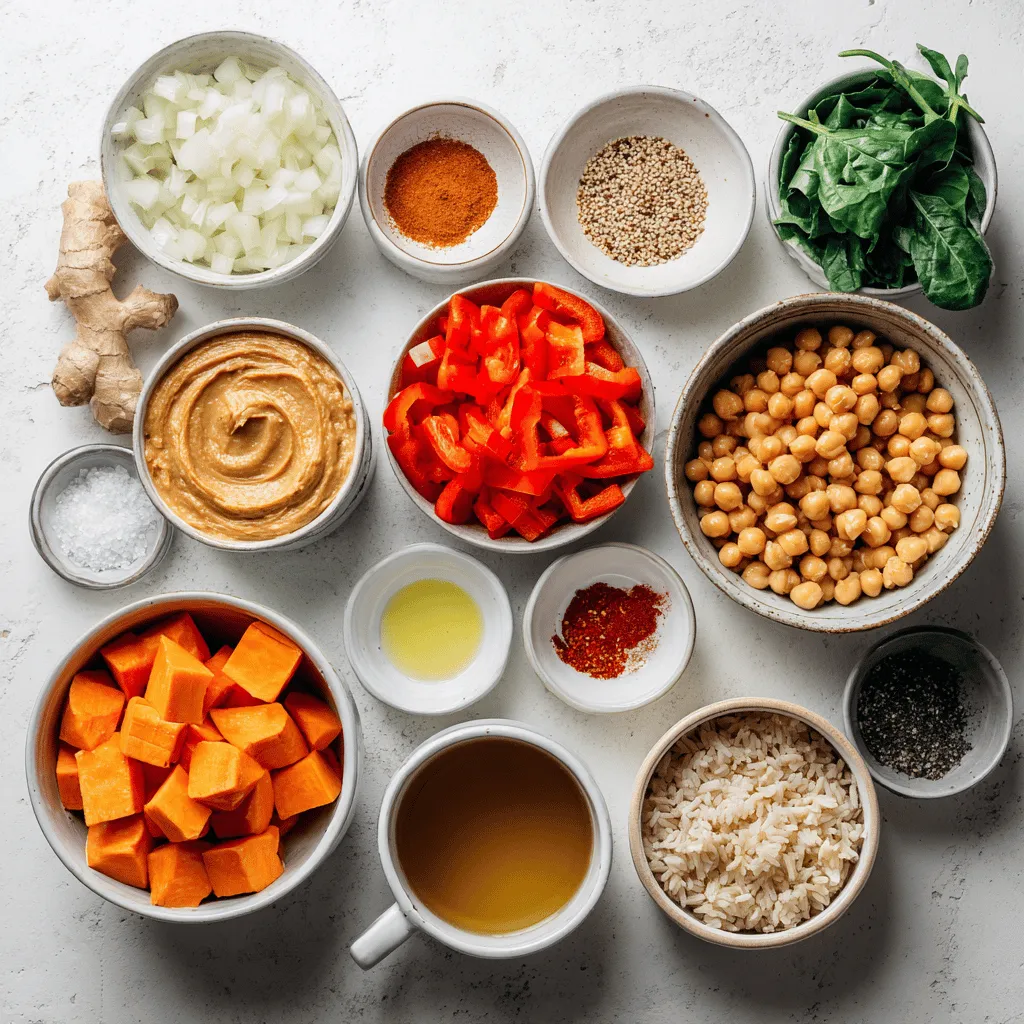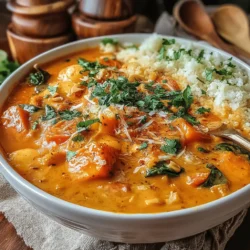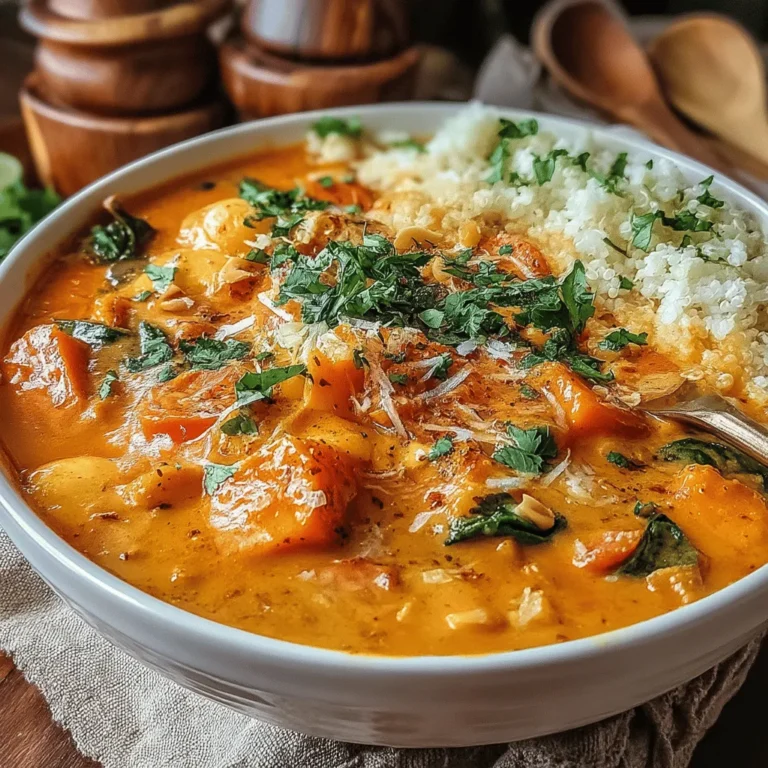Introduction
West African cuisine is celebrated for its vibrant flavors and unique combinations of ingredients. One of the standout dishes that embodies this culinary richness is peanut butter stew, a comforting and hearty meal that has become a staple across the region. This dish not only tantalizes the taste buds but also offers a glimpse into the diverse food culture of West Africa.
Peanut butter stew is a delightful blend of savory and nutty flavors, making it a favorite among many. The creamy texture of peanut butter combined with fresh vegetables creates a nourishing dish that’s perfect for any occasion. Packed with nutrients, this stew is not only delicious but also versatile, allowing for various adaptations based on local ingredients and personal preferences.
Recipe Overview
– Total Time: 1 hour
– Servings: 4
– Difficulty: Easy
Ingredients
– 1 cup creamy peanut butter
– 1 medium onion, chopped
– 3 cloves garlic, minced
– 1 tablespoon fresh ginger, minced
– 2 medium sweet potatoes, peeled and cubed
– 2 carrots, sliced
– 1 bell pepper, chopped
– 1 can chickpeas, drained and rinsed
– 4 cups vegetable broth
– 1 teaspoon cumin
– 1 teaspoon smoked paprika
– 1/2 teaspoon cayenne pepper
– Salt and pepper to taste
– 2 tablespoons vegetable oil
– Fresh cilantro for garnish (optional)

Instructions
1. In a large pot, heat the vegetable oil over medium heat. Add the chopped onion and sauté until translucent.
2. Stir in the minced garlic and ginger, cooking for an additional minute until fragrant.
3. Add the sweet potatoes, carrots, and bell pepper to the pot. Cook for about 5 minutes, stirring occasionally.
4. Mix in the chickpeas, vegetable broth, cumin, smoked paprika, and cayenne pepper. Bring the mixture to a boil.
5. Reduce heat to low, then stir in the peanut butter until well combined. Simmer for 20–25 minutes, or until the vegetables are tender.
6. Season with salt and pepper to taste. Serve hot, garnished with fresh cilantro if desired.
Understanding the Ingredients
– Peanut butter: Rich in healthy fats and protein, it adds creaminess and depth.
– Vegetables: Sweet potatoes, carrots, and bell peppers offer vitamins and minerals.
– Chickpeas: A great source of plant-based protein, enhancing the stew’s heartiness.
– Spices: Cumin, smoked paprika, and cayenne pepper contribute to the rich flavor profile.

Creating the Stew Base
To create a well-rounded and flavorful stew base, begin by sautéing your aromatics, such as onions, garlic, and ginger, in a large pot. This step is essential as it lays the foundation for the stew’s flavor profile. Once they are translucent and fragrant, add in your spices—cumin, coriander, and paprika—allowing them to bloom in the heat for a minute.
Next, integrate the peanut butter gradually, stirring it into the mixture to ensure a smooth blend. Incorporating the peanut butter at this stage helps it meld with the other ingredients, creating a rich and creamy texture. Finally, pour in your vegetable broth or water, ensuring that all elements are well combined.
How to Properly Combine Ingredients for a Harmonious Blend of Flavors
Achieving a harmonious blend of flavors is crucial for any stew. Make sure to add your vegetables, such as sweet potatoes, carrots, and bell peppers, after the base is prepared. This allows them to absorb the flavors from the spicy, nutty base rather than becoming mushy. Stir the ingredients thoroughly to coat them well in the sauce before bringing the stew to a simmer.
Simmering to Perfection
Once your stew base is ready, bring it to a gentle simmer. This allows the flavors to meld beautifully while the vegetables cook through.
Tips for Monitoring Consistency and Cooking Time for Optimal Tenderness
As the stew simmers, check the consistency frequently. If it becomes too thick, add a little more broth or water to loosen it up. Cooking time is essential; a simmer of 30 to 40 minutes should suffice for the vegetables to become tender without losing their shape. Taste the stew periodically to adjust seasoning, ensuring a balanced flavor profile.
Finishing Touches with Greens
Adding greens like spinach or kale not only enhances the nutritional value of the dish but also adds a vibrant pop of color.
The Role of Spinach or Kale in Adding Nutrients and Color to the Dish
Incorporate the greens towards the end of the cooking process, allowing them to wilt without overcooking. This step preserves their bright green color and essential nutrients, making your stew even more appealing and healthy.
Serving Suggestions for West African Peanut Butter Stew
To serve your West African Peanut Butter Stew, consider pairing it with rice or quinoa for a wholesome meal. The grains will absorb the rich flavors of the stew, creating a satisfying combination.
Recommended Accompaniments: Rice or Quinoa
Both rice and quinoa offer a delightful contrast in texture and taste. Opt for jasmine rice for a fragrant touch or quinoa for a protein boost.
Presentation Tips to Enhance Visual Appeal
For an appetizing presentation, serve the stew in a deep bowl, allowing the vibrant colors of the ingredients to stand out. A sprinkle of fresh herbs, such as cilantro or parsley, can elevate the aesthetic even further.
Suggested Garnishes and Their Flavor Contributions
Consider garnishing with crushed peanuts for added crunch, a dash of lime juice for brightness, or a swirl of coconut milk for creaminess. Each of these garnishes contributes unique flavors and textures that enhance the dish.
Nutritional Analysis of the Dish
This hearty stew is not only delicious but also packed with nutrients.
Breakdown of Calories, Macronutrients, and Vitamins Per Serving
On average, one serving contains approximately 350-400 calories, with healthy doses of protein, healthy fats, and carbohydrates. The inclusion of vegetables provides essential vitamins A and C, along with dietary fiber.
Benefits of a Plant-Based Meal and Its Role in a Balanced Diet
As a plant-based dish, the stew supports digestive health, heart health, and weight management, making it an excellent option for those looking to incorporate more plant foods into their diet.
Variations and Adaptations
This recipe is versatile and can easily be adapted to suit different tastes and dietary needs.
Suggestions for Ingredient Swaps (e.g., Using Different Vegetables or Proteins)
Feel free to substitute sweet potatoes with butternut squash or add chickpeas for extra protein. Experimenting with seasonal vegetables can also keep the dish fresh and exciting.
Tips for Adjusting Spice Levels to Cater to Different Palates
If you prefer milder flavors, reduce the amount of chili powder or add in sweet bell peppers for sweetness. Conversely, add fresh chilies for a spicier kick.
Ideas for Making the Stew Vegan or Gluten-Free
To ensure the stew is vegan, use vegetable broth and ensure your peanut butter is free from additives. For a gluten-free option, simply confirm that all your ingredients are certified gluten-free.
Conclusion
In summary, West African Peanut Butter Stew is a rich, flavorful dish that not only satisfies the palate but also nourishes the body. With its creamy texture and vibrant flavors, it offers a delightful introduction to West African cuisine. We encourage you to explore this dish and the diverse world of flavors it represents, inviting warmth and comfort into your kitchen.


